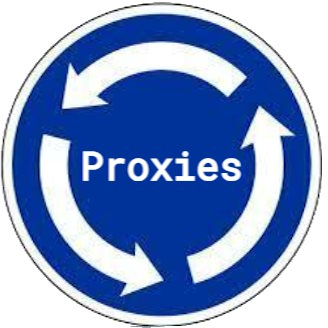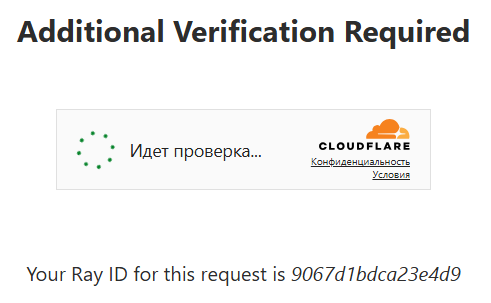Category: Development
One can absolutely run Python code in the cloud with low/zero cost, and existing VPS is actually the best option for persistent (“daemon”) execution. Below is a detailed comparison of all options, with clear recommendations based on your scenario.
✅ Existing VPS is the PERFECT Solution (Zero Cost Beyond Existing Server)
Since you already have a VPS with Python installed, this is the most cost-effective and reliable option for running code as a daemon. No new costs, full control, and no cloud vendor limitations.
Spoiler: Step by Step setup at VPS.
How to Run as a Daemon on Your VPS:
- Use
systemd(Modern Linux – Recommended)
Create a service file (e.g.,/etc/systemd/system/myapp.service):
[Unit]
Description=My Python App
After=network.target
[Service]
User=youruser
WorkingDirectory=/path/to/your/app
ExecStart=/usr/bin/python3 /path/to/your/app/main.py
Restart=always
RestartSec=5
[Install]
WantedBy=multi-user.targetThen:
sudo systemctl enable myapp # Auto-start on boot
sudo systemctl start myapp # Start now
When scraping websites or automating online activities, IP bans can be a major obstacle. Many websites implement anti-scraping measures that block repeated requests from the same IP address. To bypass this, using rotating proxies is a common and effective strategy. Rotating proxies automatically switch your IP address with each request, making it harder for websites to detect and block your activity.
Why Use Rotating Proxies?
- Avoid IP Bans: Changing IPs helps prevent your IP from being flagged or blocked.
- Bypass Geo-restrictions: Access content restricted to certain regions by rotating through proxies in different locations.
- Increase Success Rate: Improves the chances of successful requests by mimicking more natural browsing behavior.

We recently applied Sequentum Cloud to a highly protected scrape target and got quite successful results. An initial Agent run had some errors, failing data capture of some of URLs. After a support consultation we were pointed to a built-in feature of Sequentum Cloud to rerun Agent to gather missing data.

In the modern web 2.0 the sites that have valuable data (eg. business directories, data aggregators, social networks and more) implement aggressive blocking measures, which can cause major extraction difficulties. How can modern scraping tools (eg. Sequentum Cloud) still be able to fetch data of actively protected sites?
Sequentum is a closed source point and click scraping platform that integrates everything we need to bypass anti-bot services, including management of browsers, device fingerprints, TSL fingerprints, IP rotation, user agents, and more. Sequentum has had its own custom scraping browser for more than a decade, and as one of the most mature solutions on the market, they are able to support atomic level customization for each request and workflow step. As such, Sequentum Cloud is an out-of-the-box advanced scraping platform with no upfront requirement to stand up infrastructure, software, or proxies. It also has a very responsive support team, which can be useful in coming up to speed on one’s approach and is quite unique in the scraping industry. In this test, we were able to configure a site with very aggressive blocking and, with some refinement of error detection and retry logic, were able to get some of the most protected data consistently over time.
For this test, we pointed their tool at a major brand on Zoro.com, a site with aggressive blocking. Initial attempts yielded 32K records which was 94% of the estimated 34K entries. We worked with support to understand the ways to customize the advanced error detection and retry logic included in the Sequentum platform to the behavior of the Zoro.com site and was able to get 100% of the data. In this article we are sharing what we have learned.
The overall test results of Sequentum Cloud and Oxylabs API (shared in a post) might be summarized in the following comparison table.
| Success rate | Avg. seconds per page | Estimated cost | Rating | |
|---|---|---|---|---|
| Sequentum Cloud Agent | 100% | 0,4 (provided 10 browsers) | $12 ($3.75 per 1GB traffic of res. proxy) |  |
| Oxylabs' API | 90% | 11 | ~$60 ($2 per 1000 requests) |  |
The preconfigured API [of Oxylabs] is already built [and maintained] for an end user. Sequentum Cloud Platform is rather an open tool, and agents can be customized in a myriad of ways. Hence it can take longer to build a working agent [compared to a ready-API] but for the most part a custom agent is the better way to apply in an industrial scale for one’s custom use case.
Travel Routes Scrape Sources

In the post we wanna share with you what data sources to scrape to find info best routes within Europe or worldwide. The routes might include walking, biking, driving, or public transport.
Web scraping has emerged as a powerful tool for data extraction, enabling businesses, researchers, and individuals to gather insights from the vast amounts of information available online. However, as the web evolves, so do the challenges associated with scraping. This post delves into the modern challenges of web scraping and explores effective strategies to overcome them. Below we’ve selected the critical ones that encompass the most of web scraping today.
- Anti-Scraping Measures
- Dynamic Content
- Legal and Ethical Considerations
- Data Quality and Consistency
- Website Structure Changes
In the ever-evolving world of data-driven decision-making, web scraping remains a critical skill for businesses, researchers, and developers. Whether you’re gathering market insights, monitoring competitors, or building datasets for machine learning, having the right tools can make all the difference.
As we step into 2025, the landscape of web scraping tools has continued to evolve, with many free options offering powerful features. Here we share with you of the the 5 best free tools for web scraping in 2025 that you should consider.





Scrape CloudFlare life hack

When accessing any CloudFlare protected page Cloudflare’s Turnstile process begins. This system, which serves as an alternative to traditional CAPTCHAs, helps determine whether the user is human or a bot. Upon opening the page in an Incognito Mode, the user encounters a waiting room after successfully solving the Turnstile challenge.
Proxies vary significantly in their types and features, serving different purposes in data scraping and web access. They function as intermediaries between data scraping tools and target websites, offering anonymity and helping distribute requests to evade detection by anti-bot systems.
In the post we’ll share on what might be used in case residential proxies are blocked with a target server.

